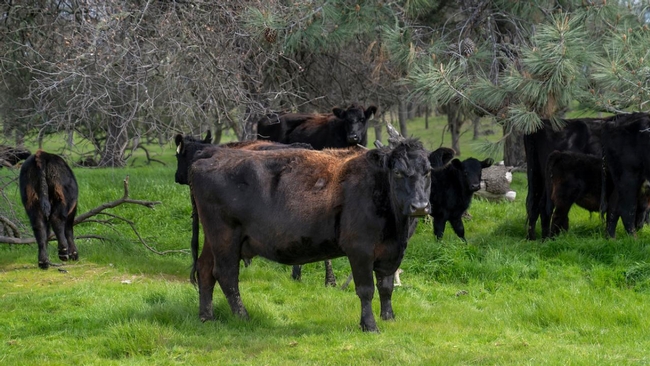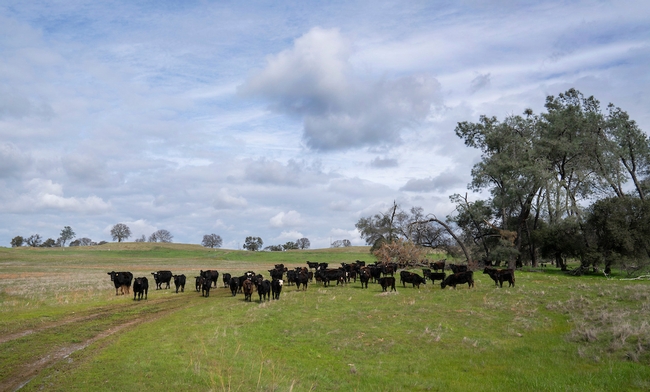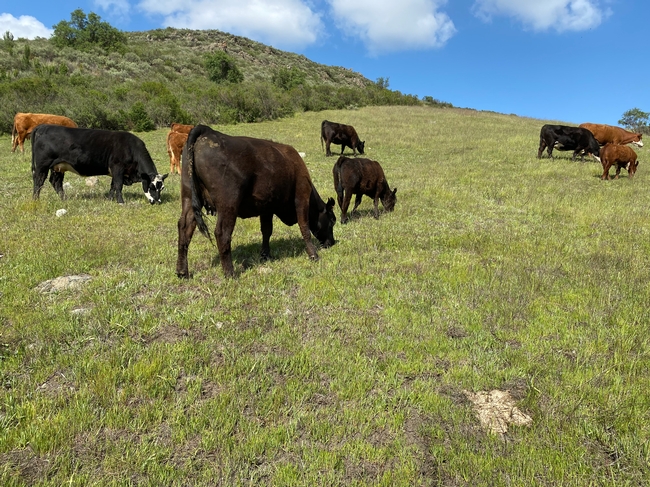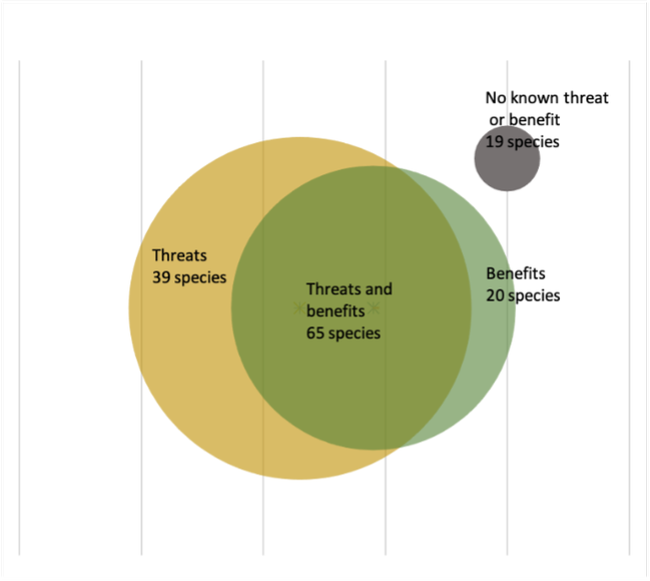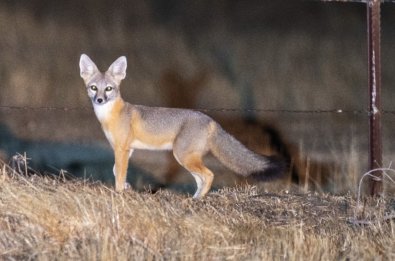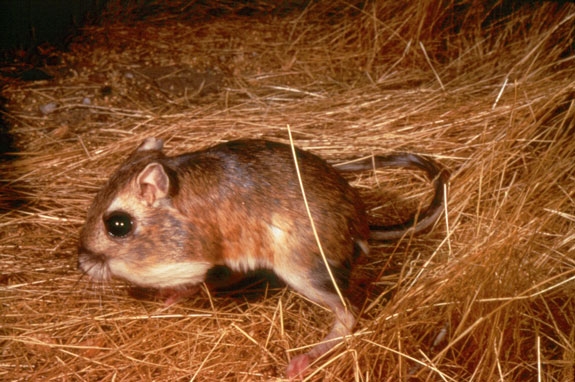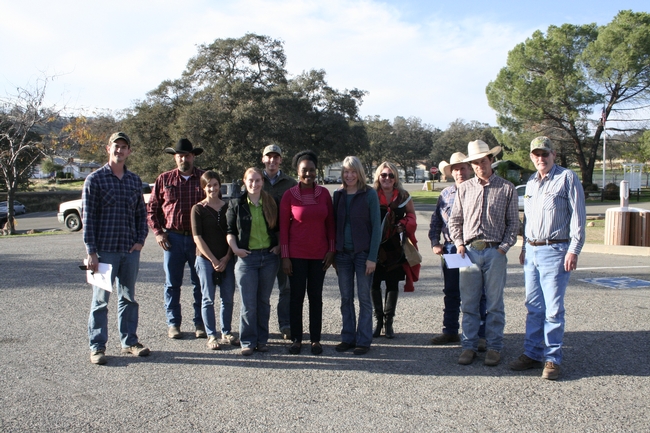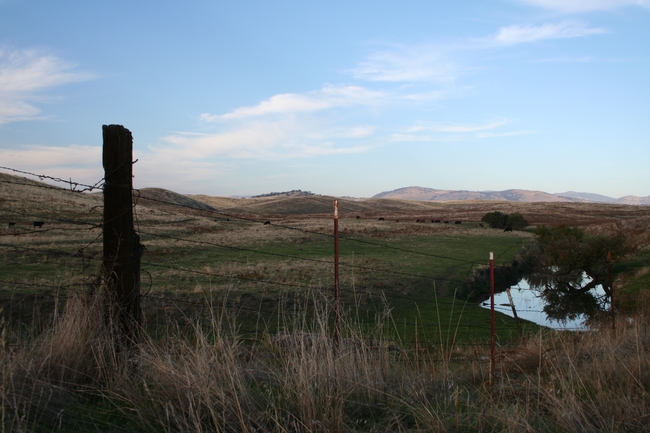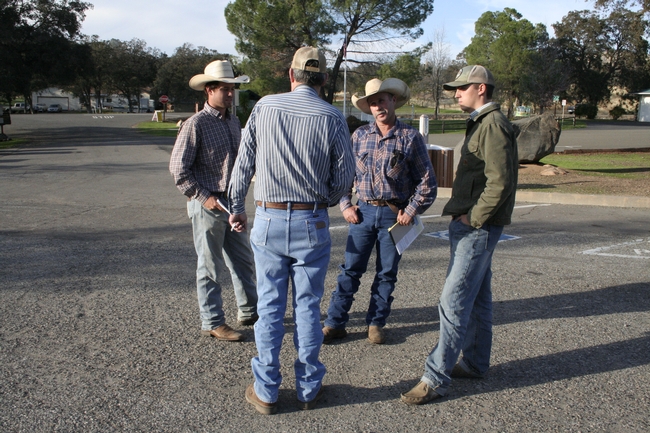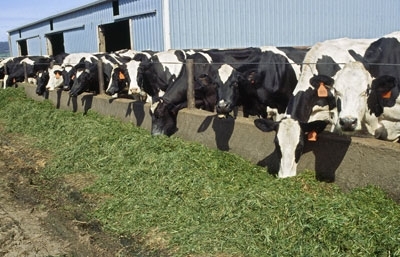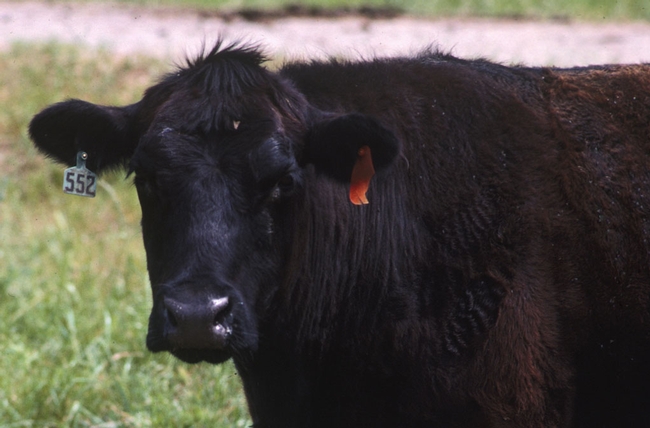Posts Tagged: beef
California’s local meat suppliers struggle to stay in business
UC Davis report suggests ways to build resilience
The University of California, Davis, Food Systems Lab has released a white paper showing the need to support California's small and mid-scale meat suppliers and processors in order to build a more resilient meat supply chain. It describes how the meat supply chain and rural economies could benefit from regulatory changes and more collaboration among producers and other stakeholders in the system.
The pandemic shut down meat processing plants in 2020, as did recent ransomware attacks on JBS, the nation's largest meat supplier. Report authors said this highlights the need to support small- and mid-scale suppliers.
“COVID and the ransomware attacks put a spotlight on how the concentration of the meat supply chain increased vulnerability in the food system,” said report co-author Tom Tomich, founder of the UC Davis Food Systems Lab and distinguished professor in the Department of Environmental Science and Policy. “We need to level the playing field so small- and mid-scale farms have an easier way to bring their product to market.”
The report says the lack of access to slaughter facilities, limited capacity of cut and wrap facilities, and concentration of marketing channels create conditions in which small- and mid-scale farms and ranches struggle to stay in business.
“These challenges are exacerbated by policies that tilt the playing field against small operators. Fortunately, new state and national legislation and programs are developing that could increase resilience in our food systems,” says Michael R. Dimock, Roots of Change program director and lead author for the report. “We need cities and counties to help fix the problems because local land use policies often impede development of resilient supply chains.”
Lack of access and limited capacity
Smaller ranchers in California have limited access to slaughter and processing facilities. In the last 50 years, California has lost half of its federally inspected meat processing plants, and the remaining facilities are unable to meet demand. Many of the 46 USDA-certified slaughter plants operating in California are closed to smaller producers.
“This means that smaller ranchers must drive hundreds of miles to reach a facility or have to wait months due to limited capacity,” said Tomich.
The report said a combination of federal, state and private investments could provide a broader geographic distribution of plants of differing scales. It also suggests expanding mobile, on-farm slaughter operations for sheep, goats and hogs, similar to those for beef.
Regulatory barriers and opportunities
Complex inspection requirements and other regulatory barriers make it difficult for small- and mid-scale producers to compete with big suppliers. The report suggests California create its own meat inspection program equivalent to the federal program to serve smaller ranchers. Prioritizing public procurement of local, high-value meat would also help expand market access for smaller producers.
Broader benefits of smaller operators
The report notes other beneficial roles of small- and mid-scale livestock operations, apart from the potential to increase resilience in our food system. Livestock grazing is a cheap and effective way to reduce wildfire risk. Supporting local meat processing also helps rural economies and creates community-based jobs.
The report was based on 27 interviews with people representing a wide spectrum of activities and points of view within the meat supply chain throughout the state. Authors are Courtney Riggle, Allan Hollander, Patrick Huber and Thomas Tomich of the UC Davis Food Systems Lab, and Michael R. Dimock with Roots of Change.
Funding for the study came from the TomKat Foundation and USDA Hatch Program.
Beef cattle grazing more help than harm for endangered plants and animals
Well-managed grazing can control non-native plants and maintain habitat and ecosystems to support a variety of species
Research recently published in the journal Sustainability documents a role for livestock grazing to support the conservation of imperiled plant and animal species in California.
Livestock grazing occurs in every county except San Francisco and is the single greatest land use in California. Grazing livestock, primarily beef cattle, often share lands with threatened and endangered species. California has more federally listed threatened and endangered species (287 plants and animals) than any other state in the continental US. While this is a result of our state's varied climate, soils and topography, the threat to diversity is predominantly from habitat loss due to land use change. Housing and urban development, solar and wind farms, cultivated agriculture, and public works projects such as reservoirs, roads and high-speed rail all result in habitat loss for some native species, many of which are threatened or endangered. Alternatively, maintaining ranching, or managed grazing for beef cattle production, can support the conservation of many threatened and endangered species in California.
A review of United States Fish and Wildlife Service (USFWS) listing documents for threatened and endangered species in California provided an opportunity to understand the relationship between livestock grazing and species conservation. Based on USFWS documents, 51%, or 143, of the federally listed animal and plant species are found in habitats with grazing. Livestock grazing is a stated threat to 73% (104) of the species sharing habitat with livestock, but 59% (85) of the species are said to be positively influenced, with considerable overlap between species both threatened and benefitting from grazing. The fact that USFWS identifies grazing as both a threat and a benefit to many species indicates that how grazing is done matters.
While species may be negatively impacted by grazing that is excessive or unmanaged, managed grazing can control vegetation and maintain habitat structure and ecosystem function to support a variety of species. Controlling non-native species, mostly non-native annual plants, is the most frequent reason that grazing benefits both federally listed flowering plant and animal species in California. In fact, 89% of species positively impacted by livestock grazing benefit from control of non-native species. For example, controlling non-native annual grasses favors native forb or broad-leaf plant populations that support the conservation of 10 different butterfly species and one moth species which rely on forbs for nectar and larvae food.
In addition to controlling non-native plants, grazing benefits some listed species by controlling vegetation, including thatch or dead plants that alter habitat. In the grasslands and shrublands of the San Joaquin Valley, maintaining habitat with sparse vegetation supports a variety of listed species, including the Kern mallow plant (Eremalche parryi ssp. Kernesis), the blunt-nosed leopard lizard (Gambelia silus), the giant kangaroo rat (Diposdomys ingens), and the San Joaquin kit fox (Vulpes macrotis). For the small ground-dwelling animals, annual grass and thatch can create an impenetrable thicket. For the larger native animals like the San Joaquin kit fox, taller, dense vegetation can obscure the visibility of predators. Habitat with sparse vegetation is also necessary for listed plant and animal species in coastal grasslands, including the Santa Cruz tarplant (Holocarpha macradenia) and Ohlone tiger beetle (Cicindela ohlone).
Some species (plants, insects and a reptile) benefit from grazing that controls vegetation associated with air pollution. The USFWS cites research that shows air pollution, specifically dry atmospheric nitrogen deposition, creates a fertilizer load that alters plant communities and habitat, and livestock grazing can restore or maintain habitat by removing excess vegetation and nitrogen. The control of vegetation through grazing is also associated with maintaining grasslands by preventing succession or invasion by brush to benefit some animal and plant species. For listed plants like the Western Lily (Lilium occidentale) that are threatened by loss of grassland, the USFWS has stated that the benefits of grazing seem to outweigh the potential threat to these plants being grazed or trampled.
Within aquatic habitats, species benefitting from grazing, which includes flowering plants, amphibians and invertebrates, are primarily found in temporary or vernal pools, where livestock help maintain an adequate inundation period. Listing documents for species in temporary pools cite research that describes increased grass cover in and around ungrazed vernal pools leading to increased evapotranspiration and decreased pond duration. Other benefits stated for listed species in aquatic habitats include two animal species that benefit from the presence and maintenance of stock ponds associated with livestock grazing.
This review of the USFWS listings documents concludes that many federally listed species in California are conservation reliant, requiring continued interventions to support their lifecycle or maintenance of habitat, and that sharing land with livestock grazing is an important conservation strategy. Species benefiting from grazing are often threatened by the loss or cessation for grazing. Most, if not all, ecosystems on the planet have been altered by land use and other anthropogenic effects. Threats to biodiversity stemming from pervasive non-native species, climate change, and the disruption of essential ecosystem processes and disturbance regimes are not typically overcome simply by preserving land, improving regulatory protections, and removing threats. Livestock grazing is perhaps the only ongoing land use that can be feasibly manipulated to manage vegetation and habitats at the landscape scale.
To read the journal article “Rangeland Land-Sharing, Livestock Grazing's Role in the Conservation of Imperiled Species,” visit https://www.mdpi.com/2071-1050/13/8/4466.
To learn more about livestock grazing and beef cattle production in California, see the "Understanding Working Rangelands" fact sheet series:
- Bay Area Ranching Heritage: A Continuing Legacy
https://anrcatalog.ucanr.edu/pdf/8528.pdf
- Cattle, Sheep, Goats, and Horses: What's the Difference for Working Rangelands
https://anrcatalog.ucanr.edu/pdf/8524.pdf
- Ranching Infrastructure: Tools for Healthy Grasslands, Livestock, and Ranchers
https://anrcatalog.ucanr.edu/pdf/8561.pdf
- Sharing Open Space: What to Expect for Grazing Livestock
https://anrcatalog.ucanr.edu/pdf/8516.pdf
- Caring for Cattle to Provide Safe and Wholesome Meat
https://anrcatalog.ucanr.edu/pdf/8530.pdf
- Cows Need Water, Too: Water Sources, Wetlands, and Riparian Areas
https://anrcatalog.ucanr.edu/pdf/8525.pdf
- Grazing Systems Management
https://anrcatalog.ucanr.edu/pdf/8529.pdf
Grass-fed beef production a possible money-maker for Central California ranchers
The health benefits of grass-fed beef are well documented. Meat from cattle that live out their lives grazing on rangeland before being processed has more beta-carotene, vitamin E and omega-3 fatty acids than the meat from animals finished at feed lots.
The health benefits – and for some consumers, the idea that cattle raised on the range have longer, happier lives than conventional beef cattle – increases the value of the product. Grass-fed beef generally sells for 60 percent more per pound than standard beef. These potential premium prices get cattle ranchers' interest, and therefore captured the attention of UC Cooperative Extension rangeland advisor for Mariposa and Merced counties Fadzayi Mashiri.
Two major challenges face ranchers who wish to produce grass-fed beef: the lack of local processing plants, and the unfamiliar marketing strategies that successfully selling a niche product demands.
“I decided to bring ranchers together to discuss these issues,” Mashiri said. She formed a group that meets regularly in Mariposa County to discuss how they might be able to work as a team to break into the grass-fed beef market. Mashiri sees this project as an opportunity for the ranchers to diversify their sources of income and increase profit margins.
“Farm to fork is getting big,” said Marshall Long, a Mariposa County supervisor and rancher who attended the meeting this fall. “I want to keep those value-added dollars in the county.
Most of the ranchers in the valley and foothill counties of Merced, Mariposa, Madera and Fresno have cow-calf operations. After calves are born on the range, they stay on the land for about a year before being sold at auctions and fed grain or other high-carbohydrate feeds in feedlots. In grass-fed production, yearlings aren't sold, but rather kept on the land for another two years before they are processed.
The meat can be quite different. Grass-fed cattle produce meat with a distinctive flavor, less marbling, and a yellow cast. And, it commands a higher price.
Mashiri invited Tara Schiff, the grant coordinator with the Mariposa County Chamber of Commerce, to the recent grass-fed beef planning meeting. Schiff spearheaded the development of a “Made in Mariposa” marketing brand. The initiative has more than 100 members, including local producers of vegetables, cider and wine.
“We have strength in numbers,” Schiff said.
Made in Mariposa is a potential marketing partner, or represents a model for local beef producers to emulate.
“If we think big, how big do we want to be?” Mashiri asked. “Can we work together to relieve individual producers of the pressure of selling on their own?”
The producers concluded that their next step would be a market study to determine whether stores and restaurants would be willing to pay for a ready supply of grass-fed beef. Schiff of Made in Mariposa and Mashiri will identify grant opportunities that would allow the group to move forward with the study.
Under Mashiri's leadership the ranchers will come together again in the spring to continue their planning work together to increase their businesses' bottom lines by diversifying into the production of a specialty meat product.
UC ANR clarifies drought misconceptions
In two recent broadcast media stories, UC Agriculture and Natural Resources experts were able to provide accurate information about the water use on commodities that have been criticized for water consumption during the drought.
The director of UC ANR's Agricultural Issues Center, Daniel Sumner, was one of three guests on the one-hour talk radio program Your Call, which was broadcast on KALW, Local Public Radio in San Francisco. The topic - How would reducing our intake of meat and dairy affect the drought? - was prompted by off-the-cuff comments made by Gov. Jerry Brown in June. Answering the question, "Is part of the drought strategy to reduce meat consumption?" Brown replied, "If you ask me, I think you should be eating veggie burgers."
On the Your Call show, Sumner explained that beef consumption has little impact on the California drought.
"I do want to make clear, when it comes to water embedded in any product, it depends where the water is from," Sumner said. "We feed cattle in California with grain from the Midwest."
Dairy production is another issue. "Dairy cows are fed lots of grain, soybeans and canola coming from Canada and the Midwest, but also silage and alfalfa, much of which is from California. California dairy is a drought water issue. Beef really isn't."
UC ANR Cooperative Extension specialist Dan Putnam appeared on the KTVU Evening News to discuss alfalfa water use with reporter Ken Wayne. Putnam said the drought has hurt the state's alfalfa industry.
"Statewide, it's been fairly devastating," Putnam said. "We're at the lowest acreage we've seen probably since the 1930s."
He also noted the importance of the crop, a key part of dairy cattle's diets.
"An average field of alfalfa produces approximately 2,400 gallons of milk per acre," Putnam said.
The hills are green, but the grass is going to seed
Ranchers rely on unirrigated rangeland to feed cattle through the winter. This year, a lack of rain required ranchers to bring in supplemental feed and cull their herds early.
Theresa Becchetti, UC Cooperative Extension advisor in Stanislaus County, said much of the grass growth on rangeland has slowed and is going to seed, though there are some grass species still growing that “can take advantage of the rain we have had," Holland reported.
Becchetti and other experts are collecting vegetation samples in the region, which could be used in requests for federal disaster aid.
A UC research station in Yuba County offers a glimpse of what could be found around much of the state, the story said. As of March 1, dry matter in grasses averaged 400 pounds per acre, compared with a historical average of 685 pounds and a high of 1,590 in rainy 1997.

